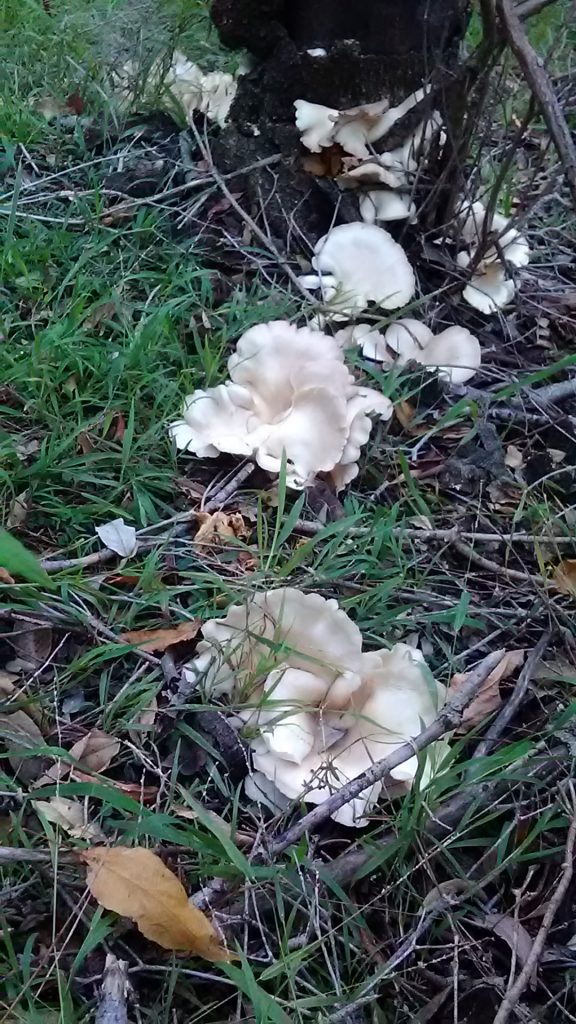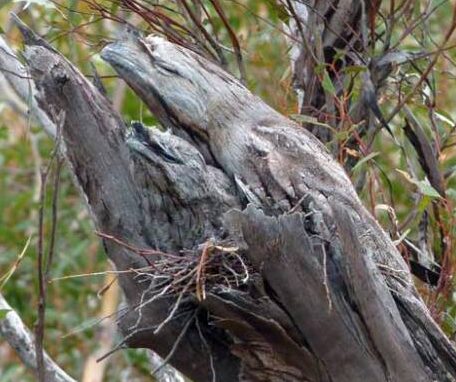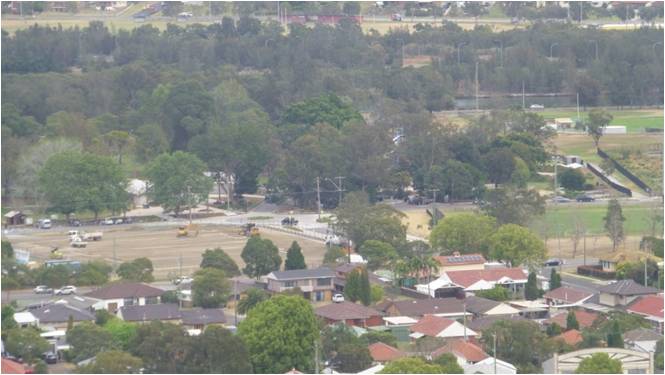Munibung Hill
The Story Of Munibung Hill
First things first
Long before the present, other-than-human-beings – plant and animal species – and other human people, had established a presence at this place we call Munibung Hill.
The land that we are advocating to be protected is part of the former homelands of the Awabakal people. Over many generations they witnessed and adapted to significant ecological changes.
The story of Munibung Hill can be told from a number of points of view.
The Awabakal People’s story is vastly different from the European story. One starts 62,000 years BCE, the other starts in 1788. The land the Awabakal people knew had undergone changes we would find difficult to fathom – from being buried in glacial ice and later as rainforest and eucalypt forests. There would have been healthy soil sustaining a vast array of plant life. Fresh growth, resulting from firestick land management techniques, would naturally flourish thus supporting an abundance of wildlife.
Underpinning these stories, there is a bigger story. It is the Earth Story – the geological story – and it uses the timeline of the cosmos. It can best be understood in terms of Big History or Deep Time. There are references to each of these ways of knowing within this website narrative of Munibung Hill.
A snapshot – some interesting stuff before we go any further
As old as the hills takes on a whole new meaning when we talk about Munibung Hill …
How old? 251 million years
How many human generations? 10,040,000
Spanning how many time periods? Four – Permian, Triassic, Jurassic and Quaternary
Where? Part of the super continent Pangea before it broke up and Australia moved away to form a separate island 180 million years ago.
How old is the lake? 6,000 years old or perhaps, young
Who watched the valley fill with water? Aboriginal people of the era – Awabakal country – witnessed the ‘valley’ fill with water entering from Swansea.
- A contemporary story — A contemporary story
- A First People’s story – see Fivefold Vision for Munibung Hill
- A Big History story — Deep Time, Big HIstory
- History of Parks – History of Parks and Recreation in Australia
Who gets the naming rights
Names in themselves tell stories. The First Peoples name was ‘scrubbed’ out, not so much that the sign was taken down, but that the new occupants did not respect the oral traditions or the ceremonial connections. It was therefore given names according to who was in possession of it at the time.
Munibung* Hill was gazetted on 23 December 1977, but we cannot establish who proposed the name and why it was chosen. There was bush tucker present on Munibung Hill. Which species or variety of fruit was it? It still begs the question, why not Kona-konaba, since the Hill was well known as a source of ochre.
*meaning ‘fruit’ according to some sources, though other sources** suggest another meaning.
**Cardiff High School magazine title was ‘Munibung’ stating that the meaning of the word was ‘the meeting of the tribes.’
For notes on Appropriate Terminology, Indigenous Australian Peoples, click on this link.
Given names according to title holders, irrespective of the indigenous ‘title’ holders.
- Brooks’ Mountain – an early name for Munibung Hill. It was named after William Brook, who received the original land grant (Source: “Lake Macquarie Memories” by D. Hartley).
- Hardys Hill – this name came from Mrs Mersie Hardy whose land included the hill. Later it was purchased by Albert Hawkins of Boolaroo. Mersie Hardy was the wife of George Hardy, who was twice President of Lake Macquarie Shire, and had previously been Mayor of Lambton three times.
- Hawkins Hill – name given to the hill at Speers Point following the sale of the land to A.G. Hawkins who established gravel quarries to support road building activities. A sandstone cave apparently once existed on the south west side of the ridgeline of Munibung Hill (overlooking Lake Macquarie) but was destroyed by the quarrying. During the war, gravel taken from this quarry was used in the construction of Williamtown Air Base.
- Munibung Hill – overlooking Lake Macquarie. (Geographical Names Board gazettel, 23 December 1977). Munibung has always been important to the Aboriginal community of Lake Macquarie. It’s high vantage point and 360 degree views of the surrounding area made it a significant location. Threlkeld recorded that the hill was named ‘Konakonaba’, and that it provided a source of ochre for the local people.
- Kona-konaba – Aboriginal name of the place where the stone called kona-kona is found. Name of a large mountain at the northern extremity of Lake Macquarie {Threlkeld}. Note that the indigenous name was of an aspect of nature. A feature outlasting any single living person at a singular point in time.
Notes on the Origins and Locations of Place Names
Newcastle, Lake Macquarie, Hunter Valley, Liverpool Plains, New South Wales
https://www.jenwilletts.com/hunter_valley_place_names_M.html
Who Visits Munibung Hill
Munibung Hill is attractive on many levels – she means a great deal to a lot of people:
- Children and adults
- Parents and grandparents
- Artists and photographers
- Nature lovers and carers
- Science and history explorers
- Foot travellers between suburbs or on the Great North Walk
- Adventure loving to those seeking peace and quiet from a noisy world
- Visitors from near and far – local, regional, state, national, international
- Those aspiring to be fit and those engaged in fitness maintenance – runners, walkers

Facilities
There are no public amenities such as picnic areas, bbq stations, tables, toilets; no information boards or signage showing directions or distances. There are no bike lockers or places to secure scooters. From the east at Lakelands paths begin with cement paving and galvanised steel steps then peter out into steep badly eroded tracks. It is a similar experience from Macquarie Hills. From the central west at Speers Point, tracks have easier grades. Carry water and sunscreen, wear covered walking shoes and supervise children.
Getting there: Tracks and Walks

North-East – Macquarie Hills:
Lawson Road access gate to Lucilla Ridge, Blaxland Road and Macquarie Road (best for South Cardiff area);
Lakelands:
Grasmere Way and Ambleside Ave (off Hawkeshead Way)
North West – Macquarie Hills:
Hillview Crs and Kuraman Close (off Delaware Street)
South – Warners Bay:
Not recommended – Thompson Road (very steep, can be slippery, unmarked)
Note: Rani Close (access overgrown with Lantana).
South West – Speers Point:
Quarry Road..
Central West – Boolaroo:
Sixth and Seventh Streets.
Public and private transport options: Train, Bus, Walk, Cycle, Car
Download Maps and Tracks PDF
ENTRY FOR THE NORTH EAST:
Blaxland Road or Macquarie Road, from Lucilla Ridge or from Lakelands. Images from left: Blaxland Road and beyond …




Plant Life

Due to extensive vegetation destruction since European settlement only remnants of the original forest cover remain. Contours reveal catchments comprising of ridges, slopes and valleys containing creeks and gullies – all part of the vibrant fabric that is Munibung Hill.
FOREST CANOPY
Dominant trees on the dry ridges include Spotted Gum, Grey Ironbark, Grey Gum and Forest She-Oak. Turpentine, Red Ash and Red Kamala occur mainly on the sheltered lower slopes.
UNDERSTOREY
Trees and shrubs include Sweet Pittosporum, Hickory Wattle, Sydney Golden Wattle, Muttonwood, Grass Trees, Burrawang and Ferns.
UNDERGROWTH
It is in the leaf-litter mixed with decaying fallen branches and logs, creating a diverse ecology of layers laid down over many years, that we find the greatest array of life at Munibung Hill. Quietly going about their business are thousands of species, most of them still unidentified. They include a huge selection of macro-invertebrates – both carnivorous and vegetarian – along with billions of micro-invertebrates. It would be impossible to attempt to list this richness of life that we are completely oblivious to. For the most part we pay no attention to the fact that all life above this level is utterly dependent on them – we humans included.
In a handful of fertile soil, there are more organisms than all the humans that have ever lived. We know, because we have counted them. Professor Iain Young, University of New England (Armidale, NSW)
A wide variety of invasive weeds are found in disturbed areas, including Lantana, Privet, African Olive, Formosan Lily, Pampas Grass and Morning Glory in the gullies. An ongoing program of weed removal and native seedlings plantings on the southern part of the hill is increasing biodiversity. There is plenty of scope for bush regeneration projects on the Hill: contact Landcare on 49210392 for more information



Fungi and Lichen Life
Much overlooked if not ignored aspects of nature are fungi and lichen. Only in recent times, perhaps the last decade or so has more attention been paid to this largely hidden part of nature. Neither plant nor animal, fungi and lichen occupy a place of their own and deserve much greater prominence when it comes to listing the aspects of Munibung Hill that are worth highlighting and protecting.
In his book Entangled Life, Merlin Sheldrake makes the case for fungi to be recognised as a keystone species that came into existence well before plants. In fact fungi play a central role in the lives of all plants and animals, including we humans.
It is for these reasons that we devote a separate section to fungi and lichen.
For the most part, not much in the plant and animal world, exists without soil and these two organisms are crucial in the formation and health of soil.
This section is strategically placed between plant life and animal life because fungi entangle the two into what could be described into one indivisible whole, only separated by us for simplification, all the while acknowledging the complexity of what is going on around us. Much of this complexity remains beyond our understanding, all of which reinforces the need to take care of what takes care of us, whether or not we pay them any attention, realise their role or credit them with having paved the way for our very existence.
Examples of the fungi found at Munibung Hill, are noted here and on our Gallery page.



Animal life
Munibung Hill is home to a diverse range of fauna.
Larger animal life
Furred
Mammals include …
CLIMBERS: endangered Squirrel Gliders and Brushtail Possums
DIGGERS: Echidnas
HOPPERS: Wallabies
RUNNERS AND DIGGERS: Bandicoots
(Locally extinct – no longer living at Munibung Hill – Platypus (swimmers), Wombat (diggers)
Scaled
Reptiles include …
CLIMBERS: Bearded Dragons, Goannas and the non-venomous Green Tree Snake
RUNNERS: Blue Tongue Lizards
SWIMMERS: Long Neck Tortoise all calling Munibung Hill their home.
Feathered
Avians include …
GRASPING: Powerful Owl*, Masked Owl*, Eastern Osprey*, Tawny Frogmouth, Nankeen Kestrels, Kookaburra, Swamp-Harrier, White Bellied Sea Eagles*(**)
GRIPPING: White Sulphur Crested and Black Cockatoos, King Parrot, Swift Parrot*, Australian Raven, Noisy Friar Bird and Shrike Cuckoo, White-throated Needletail* – they are the fastest-flying bird in flapping flight, being capable of 170 km/h (105mph), faster than other swifts.
HOPPING & PERCHING: Firetail Finch, Eastern Yellow Robin, Whiptail, Blue Wren, Australian Minors, Brush Turkey
PADDLING: Ducks
WALKING & WADING: Herons
*Threatened species
(**)Other species can be seen soaring above the hill. While the eagles mainly feed on aquatic creatures, such as fish, turtles and sea snakes, they also prey on mammals.
Nightlife
When the sun begins to set and the people retreat to their houses, the forest sees some life turn in for the night, while other animals stir from their hollows, peak out from under their logs or burrows, while others rouse from their roosts. It is a veritable concophony of sounds and sights.
Nocturnal wildlife includes …
FROM THE CANOPY: Powerful and Masked Owls, Tawny Frogmouth, Tiny and even micro bats, Brushtail Possums, Squirrel Gliders
WITHIN THE UNDERSTOREY: Spiders and a myriad of insects
ON THE GROUND: Bandicoots, Native mice, Wallabies
AND the not to be tolerated INTRODUCED FERAL ANIMALS that predate on the young and not so young native animals that are vulnerable to their hunting behaviours. Not only foxes, this includes roaming domestic cats.
Smaller animal life
Ants, Centipedes, Millipedes, Ground-beetles, slugs, snails, spider, slime mould. This list doesn’t do justice to the variety or the complexity or multi-functioning capacity of these unsung aspects of Munibung Hill or any other areas of nature where we live, work and play. 95 per cent of all the animals on Earth are of the invertebrate kind. Entomologists would have us pay closer attention and take into account our ways of living, such that these creatures are given their due recognition and valued for the critical roles they play in keeping us safe and healthy. More at: Invertebrates Australia.
NATIVE FAUNA continue to suffer from habitat loss whether they are feathered, furry or scaly friends. As more land is cleared of trees, native grasses and low lying bush areas around the hill to make way for new housing and industry developments, valuable shelter and food sources are lost. A recent (2017) Macquarie Hills subdivision saw all existing mature trees, native grasses, shrubs and wildlife removed to make way for a 76 lot housing development. By considering our local Fauna friends alongside future developments we can create a better future for humans and all living creatures on the planet.
Threatened flora are listed here in the animal life section because animals need habitat, so threatened flora is of particular concern for animal species. The map at right was accurate as at 2019, since then four (4) additional species have been added – Threatened Flora (+1) and Fauna (+3) as noted below.

Threatened Flora
Scientific name (Common name)
Angophora inopina, (Charmhaven apple)
Conservation status in NSW: Vulnerable
Rhodamnia rubescens, (Brush turpentine, Scrub stringybark) Conservation status in NSW: Critically Endangered Gazetted date: 01 Feb 2019
Syzygium paniculatum, (Magenta lilly pilly) [possibly planted], Conservation status in NSW: Endangered Gazetted date: 31 Jul 2009, Profile last updated: 21 Aug 2019
Tetratheca juncea (Black-eyed Susan)
Conservation status in NSW: Vulnerable.
It is understood that the plants are found in lowlands in a Bloodwood-Apple forest
Threatened Fauna
Eastern Bentwing-bat, Eastern Freetail-bat, Grey-headed Flying fox, Little Bentwing-bat
Eastern Osprey, Masked Owl, Powerful Owl, Swift Parrot, White-bellied Sea-Eagle, White-throated Needletail
Underfoot


GEOLOGICAL HERITAGE
Munibung Hill is an example of the youngest Permian geological series, 253 million years ago, before the Triassic terrestrial sediments dominate from 251-199 million years ago.
Plant life was well established by this time as Munibung Hill and the rest of today’s Australia was part of the super-continent Gondwana. Gondwana included Australia, Antarctica, India, Southern Africa and South America.
Permian sandstone, conglomerate, mudstone and cherty tuff (298-252 million years ago) POLAR SEA – major extinctions; reptile diversity
MUNIBUNG HILL has some of the youngest rocks of the Newcastle Coal Measures. These rocks formed during the Permian period approximately 253 MYA, when tectonic plates were colliding and subducting along the eastern side of Australia. This resulted in a series of volcanoes well off the current New South Wales coastline and high mountains in the New England region to the north. Rain and snow-melt flowed southward from the mountain peaks toward the ocean and carried gravel, sand, mud, while volcanoes to the north east blasted large volumes of volcanic ash across today’s Newcastle and Lake Macquarie region. A complex network of channels formed levees, with associated lakes and swamps.
Triassic sandstone (252-201 million years ago) RIVER DELTA – first mammals; first dinosaurs
THIS SOFT STONE was formed during Australia’s slow journey north from the South Pole. The Earth’s crust was being pushed and pulled. The climate warmed and rivers spread across sea floors, forming swampy flood plains where fish, reptiles and amphibians thrived. Sediments were deposited in lakes and rivers, which eventually, formed the soft rock we know as Triassic sandstone.
Quaternary glacial deposits (2.5 million – 12,000 years ago) Pleistocene ICE AGES – multiple glaciations; humans evolve and migrate between continents during very low sea levels during glaciations
GLACIERS SHEAR through the rocks they move across, collecting loose material from the surrounding landscape, dumping it further downhill. The geographical features they leave behind can be significant
LAKE MACQUARIE was formed following the Pleistocene glaciations that lasted between 2.6 million years ago until about 11,600 years ago. Sea levels only stabilised about 6,000 years ago.
Reference: Hunter Amateur Geological Society Geo-Log 2019 2019.pdf (agshv.com)
Munibung Hill features and cultural value
Panoramic Views
Panoramic Views can be enjoyed from many locations around the hill. From the coast to the east, pan to the south to take in the blue waters of Lake Macquarie, then all the way to Sugarloaf Mountain Range to the west.

Central west views from Awaba Lookout, Quarry Road entry point.
From left: Lake Macquarie Museum of Art and Culture; Speers Point Variety Playground; Boolaroo, Speers Point and beyond.






South and east views from Left:
View towards the lake including Warners Bay, from the eastern shoulder just before the last climb to the top; South across the lake; East to Newcastle, Christ Church Cathedral and ocean beyond. Pictures credit: Bob Todd








